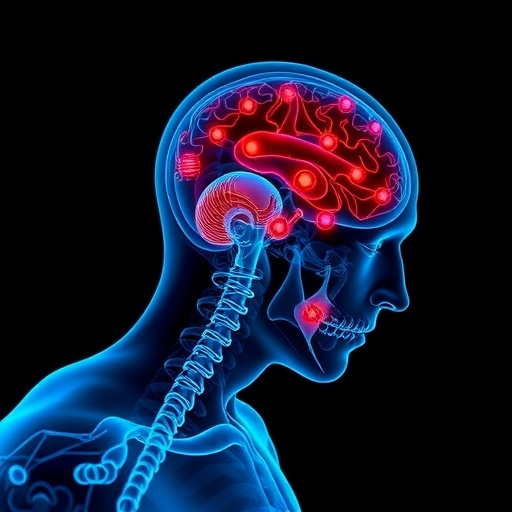Recent research published in Scientific Reports has illuminated the intricate relationship between depression, the use of hydroxyurea, and neuropathic pain in individuals suffering from hemoglobinopathies, a collective term for disorders caused by abnormalities in the hemoglobin molecule. Hemoglobinopathies, which include conditions such as sickle cell disease and various forms of thalassemia, affect millions of people worldwide, leading to not just hematological complications but also myriad psychological and neurological challenges. This study by Demiray and Oktay adds a crucial layer to our understanding of these interconnections, potentially guiding future treatment protocols.
Neuropathic pain is often a debilitating symptom reported by patients with hemoglobinopathies, significantly impairing their quality of life. Characterized by chronic pain resulting from nerve damage, neuropathic pain is notoriously difficult to treat. The underlying mechanisms include alterations in pain pathways and neuroinflammation, which collectively contribute to sensitivity and the perception of pain. Understanding neuropathic pain’s relationship with other comorbidities, such as depression, is vital for developing a more holistic treatment approach that addresses not only the physiological but also the psychological aspects of these conditions.
Depression is another common comorbidity among individuals with hemoglobinopathies. The psychological burden of living with a chronic disease, along with the physical symptoms and complications, can lead to heightened feelings of despair, hopelessness, and anxiety. This study explores how these psychological factors may not only coexist but may be interlinked with physical symptoms, such as neuropathic pain. The authors emphasize the importance of assessing both the mental health and pain management strategies in these patients to improve overall clinical outcomes.
Hydroxyurea has long been used in the management of sickle cell disease. It functions by increasing fetal hemoglobin production, thereby reducing the proportion of sickle hemoglobin in circulation, which subsequently decreases the frequency of vaso-occlusive crises. However, its role in modulating pain and psychological symptoms has been more recently scrutinized. Demiray and Oktay’s research highlights a potentially protective effect of hydroxyurea, suggesting that its use may alleviate both depressive symptoms and neuropathic pain, although the exact mechanisms remain to be fully elucidated.
The study employs a multifaceted approach, utilizing both qualitative and quantitative data to delve into the experiences of patients diagnosed with hemoglobinopathies. By examining patient-reported outcomes in relation to their hydroxyurea treatment status and depressive symptoms, the authors have constructed an intricate picture of how these elements interact within the patient population. This is significant, given the varying responses to treatment that can exist, informed by factors such as genetic backgrounds, disease severity, and individual psychosocial circumstances.
The researchers utilized standardized assessment tools for depression and pain, ensuring that their findings were statistically robust. Through meticulous analysis, they were able to identify patterns suggesting that patients treated with hydroxyurea reported lower levels of depression and were less likely to experience neuropathic pain when compared to their untreated counterparts. This finding positions hydroxyurea not just as a therapeutic agent for hematological rescue but also as a potential modulator for mental health and pain management.
Moreover, the implications of this study extend beyond the clinical setting. As the healthcare community pursues integrated care models, understanding the intersections of mental health, chronic pain, and hematological disorders becomes critical. The research adds to the growing body of evidence supporting the biopsychosocial model, which advocates for a comprehensive approach to treatment that addresses biological, psychological, and social factors contributing to health outcomes.
The interplay between depression and pain is particularly noteworthy. Research has shown that depression can amplify pain perception, while persistent pain can exacerbate depressive symptoms, creating a vicious cycle that is difficult to break. The authors effectively articulate this interplay, proposing that interventions targeting either or both conditions could yield benefits for patients enduring neuropathic pain due to hemoglobinopathies.
In addition to pharmacological interventions like hydroxyurea, psychosocial strategies must also be incorporated into treatment plans. These could include cognitive-behavioral therapy, mindfulness practices, and support groups tailored for individuals facing the unique challenges posed by hemoglobinopathies. The importance of a multidisciplinary approach cannot be overstated, as it offers patients a more comprehensive strategy for managing their health.
Furthermore, the researchers call for more extensive longitudinal studies to further explore these relationships and identify additional factors that could influence outcomes. By examining how various demographic and clinical variables might interact with treatment efficacy, future studies can help to hone specific and more personalized approaches to patient care.
Overall, the study by Demiray and Oktay represents a significant evolution in how we conceptualize the treatment of hemoglobinopathies. It urges clinicians and researchers alike to embrace a holistic view of patient care that reflects the complex realities of living with chronic health conditions. By recognizing how intertwined depression, pain, and hydroxyurea use are, healthcare providers can better support their patients, ultimately enhancing their quality of life.
In conclusion, the findings of this study are not only provocative but also a necessary reminder of the complexities inherent in treating chronic health conditions. With a focus on the connections between mental health, pain management, and treatment adherence, this research advocates for a richer dialogue between patients and healthcare providers. It could very well shape future therapeutic strategies aimed at improving overall patient outcomes in the context of hemoglobinopathies.
The results of this study pave the way for innovative research trajectories that explore the nuances of chronic disease management. As healthcare continues to evolve, integrating psychological and physical health assessments will become increasingly crucial to achieving optimal health outcomes. The answers you’re seeking may lie in broadening our scope of understanding, and this research is a landmark step in that direction.
Subject of Research: The relationship between depression, hydroxyurea use, and neuropathic pain in hemoglobinopathies.
Article Title: Association of depression and hydroxyurea use with neuropathic pain in hemoglobinopathies.
Article References:
Demiray, D.Y., Oktay, G. Association of depression and hydroxyurea use with neuropathic pain in hemoglobinopathies.
Sci Rep 15, 35750 (2025). https://doi.org/10.1038/s41598-025-20590-w
Image Credits: AI Generated
DOI: 10.1038/s41598-025-20590-w
Keywords: hemoglobinopathies, hydroxyurea, neuropathic pain, depression, chronic health conditions




